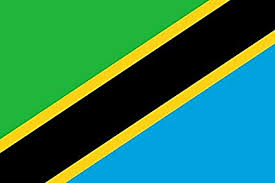Radiation Protection Officer Course (Advanced) January 10 -12 June 2025 (Online)
Sorry, currently out of stock
For availing the online version of the same RPO Advanced course
Please click the following link:
Radiation Protection Advanced Course
For corporate/group booking, please feel free to contact us!
Email: info@radiologycourses.org
+971582047475
Course Description:
A comprehensive course that provides the technical and practical information to be a radiation safety officer. It covers all the necessary information in accordance with the requirements of Federal Authority for Nuclear Regulations (FANR) and also useful for anyone who works with radioactive materials.
Course Aim:
At the end of the course, the participant will be able to understand the basic radiation physics and its characteristics and to develop the ability to critically assess radiation exposure risks associated with the use, storage and disposal of radioactive materials in medical facility in preparation to take responsibility as Radiation Protection Officer.
Target Audience:
- Allied Health Professionals
- Radiation Protection officers - who deal with Radiation Safety issues on a daily basis.
- Staff who want to be a Radiation Protection Officer.
- Radiologists and interventional radiologists.
- All Physicians in medical, surgical, acute diagnostic divisions Radiographers and radiology technologists.
- Radiation exposure workers.
- Dentists, Dental clinic staff.
- Operation theatre staff.
- Cath lab staff
Course Contents
This course is in accordance with FANR Curriculum
I. Review of Fundamentals I: Nature of Ionizing Radiation and Radiation Physics
I.1 Basic Physics and Mathematics used in Radiation Protection
I.2. Classification of Radiation
I.3. Radiation Sources
I.4. Need for Radiation Protection
I.5. Radiation Protection in Medical Imaging
Review of Fundamentals II: Physics in Medical Imaging Modalities (X-ray, CT and Ultrasound)
- A. X-ray Physics (On-line)
A.1 Structure of Atoms
A.2 Production of X-rays
A.3 Interaction with Matter
A.4 Properties of X-rays and Gamma rays
A.5 Absorbed Dose
A.6 Filtration
- B. Computed Tomography (CT) Physics (Online)
B.1 History and Introduction
B.2 Principles of Computed Tomography
B.3 The CT Imaging System
B.4 Image Construction and Processing
B.5 CT Acquisition
B.6 Image Quality
B.7 Artefacts
- C. Ultrasound Physics (Online)
C.1 Introduction to Physics for Ultrasound
C.2 Ultrasound plane waves
C.3 Ultrasonic Properties of Biological Tissues
C.4 Ultrasonic transduction
C.5 Doppler Physics
C.6 Biological Effects of Ultrasound
C.7 Modes of Ultrasound
C.8 Array System Principles
C.9 B-Mode Instrumentation and Signal Processing
C.10 Modern Imaging Methods
C.11 Colour Flow Imaging
C.12 Image Artefacts and Quality Assurance
- D. Magnetic Resonance Imaging (MRI) Physics (Online)
D.1 Introduction
D.2 Nuclear Medicine Resonance
D.3 Relaxation and Tissue Contrast
D.4 MR Spectroscopy
D.5 Spatial Encoding and Basic Pulse Sequences
D.6. Hardware
D.7 Basic Image Quality Issues
D.8 MR Image Acquisition and Reconstruction
D.9. Artefacts
D.10 Safety and Bioeffects
II. Radiation Quantities and Measurements
II.1 Quantities and Units
II.2 Dosimetric calculations and measurements
II.3. Principles of radiation detection and measurements
III. Biological Effects of Ionizing Radiation
III.1 Effects of radiation at the molecular and cellular level
III.2 Deterministic effects
III.3 Stochastic somatic effects
III.4 Stochastic hereditary effects
III.5 Effects on embryo and foetus
III.6 Epidemiological studies and issues
III.7 The Concept of radiation detriment
IV. Principles of Radiation Protection and International Framework
IV.1 Radiation Protection and Detriment
IV.2 Practice Justification
IV.3 Individual Dose Limits/Reference Dose Levels
IV.4 ALARA
IV.5 Special Considerations
V. FANR I: Regulatory Control
V.1 Legal Framework for radiation protection and the safe use of radiation sources.
V.2 Regulatory System
V.3 Assessment of the effectiveness of the regulatory programmes.
VI. FANR II. Radiation Protection and Safety Programme Advise for Diagnostic Radiology
VI.1 Safety Assessment
VI.2 Occupational Protection
VI.3 Individual and Workplace Monitoring
VI.4 Patient Exposure Protection
VI.5 Public Protection
VI.6 Employee Training
VI.7 Radiation Safety Policies
VI.8 Management Structure
VI.9 Radiation Protection Officer
VI.10 Operating Procedure
VI.11 Incident Reporting and Investigations
VI.12 Facilities and Equipment: Information on Floor Plans
VI.13 Management Control of Radiation Sources
VI. 14 Quality Control of Radiation Sources
VI.15 Quality Assurance Protection and Safety Program
VII. Assessment of External and Internal Exposure
VII.1 Introduction
VII.2 International Guidance and Recommendations for Occupational Radiation Monitoring
VII.3 Status of Monitoring Practice
VII.4 Development in Monitoring Methods and Techniques
VII.5 Outlook
VII.6 Conclusions
VIII. Protection Against Occupational Exposure
VIII.1 Organization and management.
VIII. 2 Methods of protection and the safe use of radiation sources; optimization
VIII.3 Individual and workplace monitoring
VIII.4 Health surveillance
VIII.5 Potential exposures
VIII.6 Protection against occupational exposure in diagnostic radiology
IX. Medical Exposure in Diagnostic Radiology
IX.1 Scope and Responsibilities.
IX.2 Justification of Medical Exposures.
IX.3 Optimization of Protection for Medical Exposures
IX.4 Quality Assurance.
IX.5 Accidental Exposures in Medical Applications
X. Radiation Safety Committee-FANR Licensing Procedure and Section D.
X.1 Radiation Safety Committee
X.2 Radiation Protection Arrangements
X.3 Radiation safety policies
X.4 Facilities and Equipment
X.5 Programme to Ensure Control of Radiation Sources
X.6 Quality Assurance
XI. Training
XI.1 Training Needs
XI.2 Setting Up A Training Plan
Course Date:
12 January 2025 (online)
13 January 2025 (face to face)
WHY RADICON COURSE:
- Provides the technical and practical information needed to be a radiation safety officer.
- Covers awareness of the content of any special requirements for permanent facility or site operations and the importance of complying with these.
- The course fee includes Lunch, Refreshments, and provides up to 16 CPD points.
Timings:
08:30- Registration
09:00-17:00 Class
Inclusions:
- Lunch
- Coffee breaks and refreshments
- CPD certificate with up to 14 CPD Points
COURSE VENUE:
RADICON INSTITUTE OF RADIOLOGY
Online and DHCX
Dubai Healthcare City
P.O Box 505226, Dubai. UAE.
info@radicon.org
Phone/WhatsApp: +971582047475



























